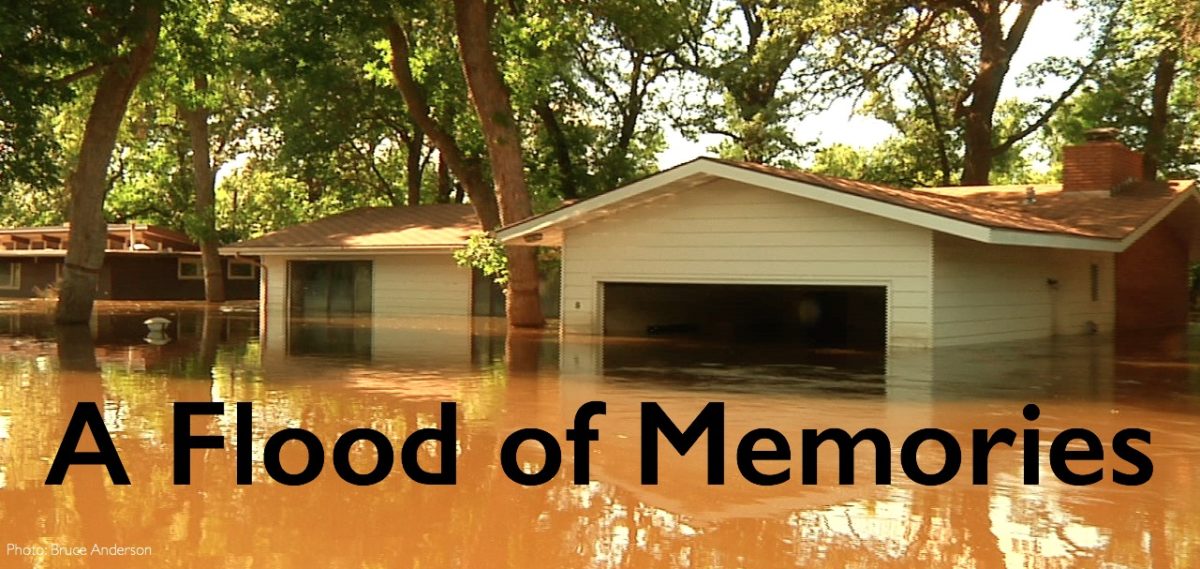The following was written by Carolyn Moore and reprinted with permission from BisonBooties.com
June 22, 2011—12:57pm
I’m sitting on my mother-in-law’s couch, gazing out the window at the lush green of North Dakota’s countryside in full bloom. It’s the kind of day we relish in Minot; hot summer sun is fleeting in the northern plains, tightly bookended by the slide into and out of long winter months. But this day is textbook perfection by all accounts.
Except for one thing: life as we knew it is about to be swallowed up by the raging Mouse River.
Typically the Mouse (or Souris River, as its known in Canada) winds through this town of about 40,000 people, gently halving it into “North Hill” and “South Hill” with the tree-lined valley at its heart. It’s a quiet river, rarely gaining attention or drawing concern. I grew up a stone’s throw from the water, never worrying it might spill over its banks.
It’s a complicated system, the way this river is managed; four upstream dams—Alameda, Rafferty, Boundary, Lake Darling—are controlled by the US and Canada via international treaty. In years when snowpack and runoff are high, additional government agencies get involved, adhering to a manual agreed upon by the two nations. Target flows, water levels, cubic feet per second—there’s little room for flexibility, by design, in hopes that a scientific approach will usher water through the region without incident.
But 2011 set up like a perfect storm. The bathtub, if you will, filled up faster than the drain was being allowed to run. Dams neared capacity. Downpours oversaturated the ground. Spring runoff reached record levels. The drain was opened incrementally, but it was too little, too late. Soon, the bathtub would overflow, even when the drain was pulled completely.
By June 19th, local news video of water crashing out of the gates at Lake Darling Dam was shocking, sobering. Minot was going to flood—and it was going to be bad. I’ll never forget the moment that day—Father’s Day—standing in my living room watching Minot’s mayor confirm the news with a drawn, grim face: water will destroy the valley. Evacuate now. Take all you can. Hurry.

And so, the exodus began. Flatbed trailers, moving vans, anything with wheels flooded the valley first, as we scrambled to salvage what we could. Looming catastrophe was thick in the air. It was, quite literally, as if all your neighbors decided to move away on the same day. Despite the circumstances, it was eerily still—almost as if a nuclear bomb had fallen. The quiet was deafening.
By that Wednesday afternoon on June 22nd, our house had been stripped of every item of worth or sentiment, an empty shell waiting for impending disaster, perfectly mirroring my own feelings. There would be a time for hope, for grit and gratitude, self-reliance and hard work, but this was a time for sorrow. As the sirens began their somber wail 57 minutes and 20 seconds after noon, signaling the first of the water overtopping the dikes, we all felt the incredible pain it signified.


As I sat on that couch on the high ground of Minot’s South Hill that afternoon, the TV news anchor’s voice (a voice, incidentally, belonging to my father) filled the airwaves on televisions glued to his station’s 24/7 coverage: “Water is inundating the city and is moving over the top of the dike system…It’s a dike system that has done its job over the past few weeks to give citizens safety and comfort but unfortunately, it’s just too much for it to handle. The question now is can we all pull together and make sure thatwe are able to handle what comes in the coming days and weeks?”
From the comfortable distance four years affords, sitting inside my rebuilt home, I know now the answer was, “Yes.” Because while the Mouse roared, unleashing its far-reaching, catastrophic physical damage, something else was rising in us: strength. We grieved that day for what we’d lost, we got mad, we felt despair. But quietly, steadily, we grew determined to come out the other side of it stronger, better, more weathered but wiser.

It’s why four years later, recalling that sound, that sinking feeling, that day—there’s room in my heart for more than pain. There’s pride for being part of a community that rose to the challenge of rebuilding our lives—and becoming the better for it.
Title Image: That’s my house in the photo above, still underwater about a week after the crest of the Mouse River in Minot in 2011. Our home saw 5’5″ on the main level (water that sat about 10 days), and many homes in the city saw up to double that. At the time, we had two young kids–ages 2 and 3mos. old–and the following is my recollection of the evacuation that preceded Minot’s historic flooding, which displaced some 12,000 residents.



